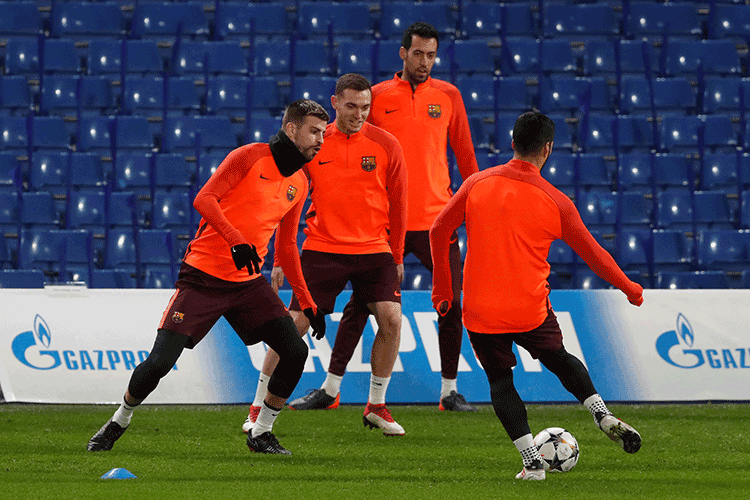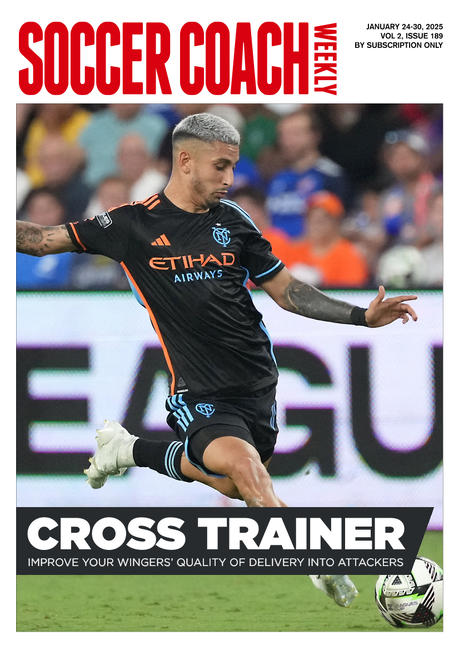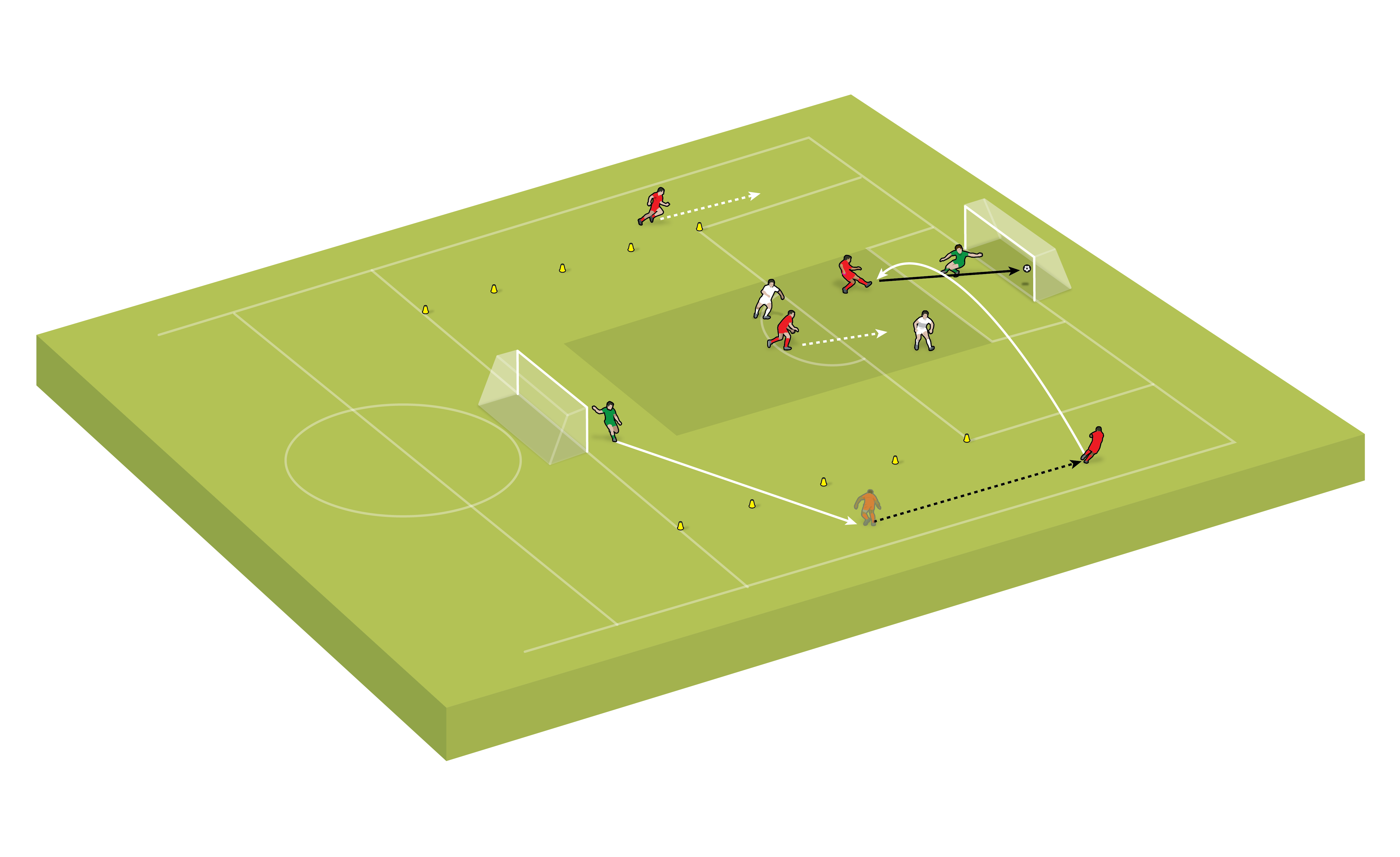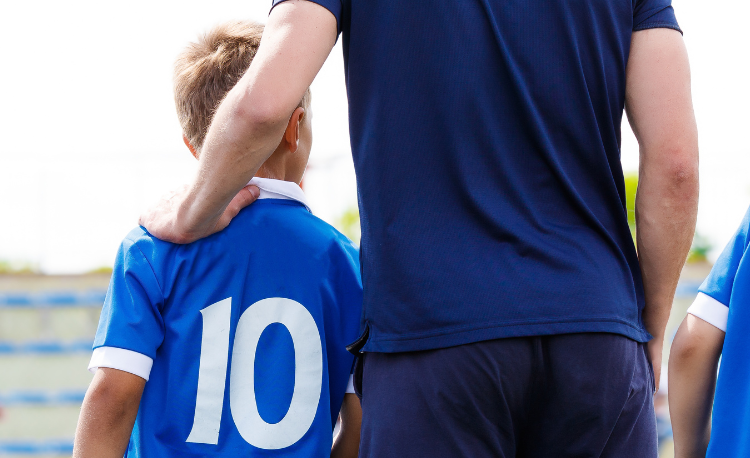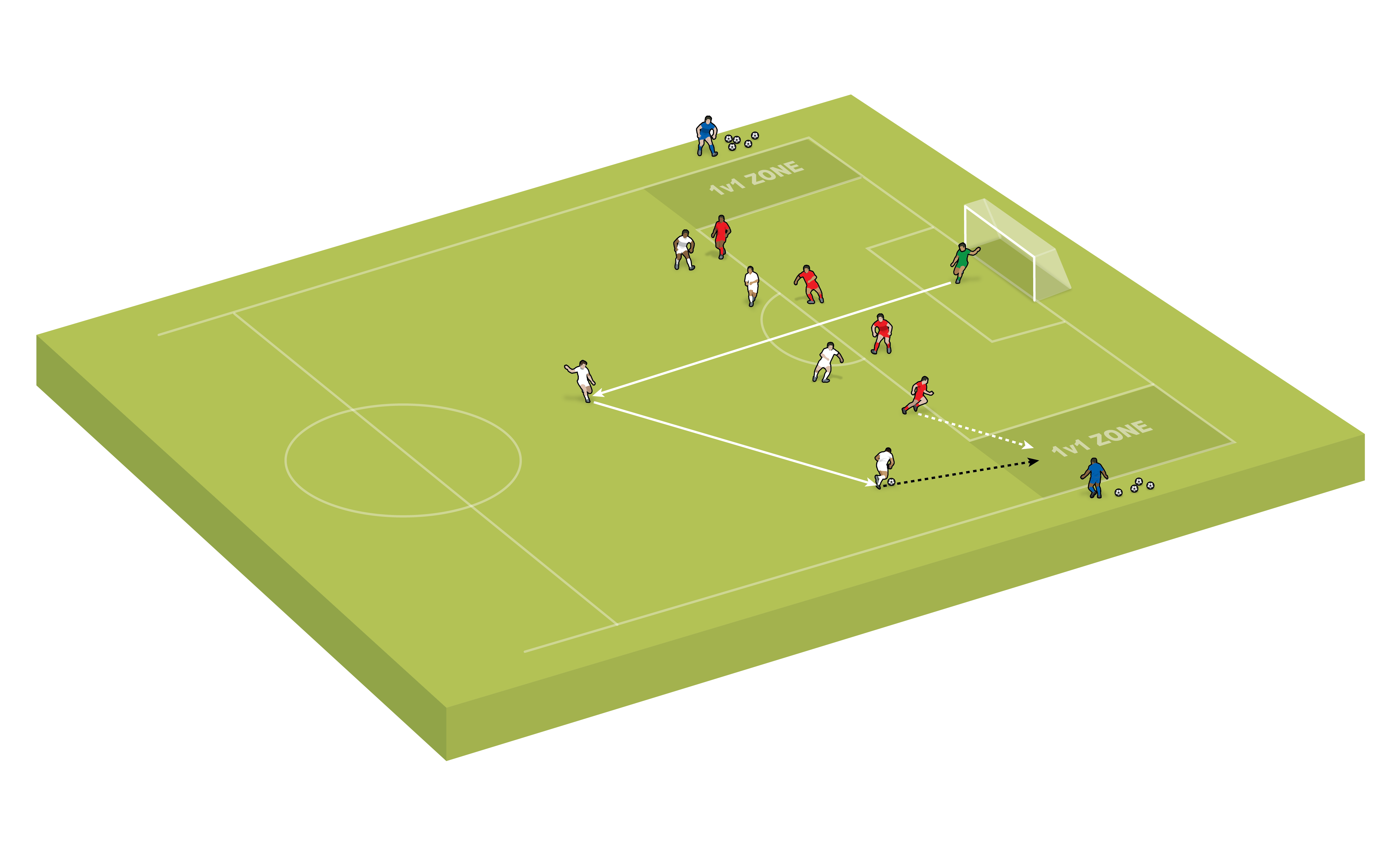How Do I Coach Better First Touch?
Whether it’s receiving a firm pass on the run, intercepting an ill-considered pass by the opposition, or just winning a 50/50 ball, some of our players just aren’t able to keep the ball close enough on that first touch to establish complete control.
QUESTION
I coach a team of talented little players at the U12 level. There’s so much that’s right about their game and skills, but one thing that plagues us is establishing control from the first touch.
Whether it’s receiving a firm pass on the run, intercepting an ill-considered pass by the opposition, or just winning a 50/50 ball, some of our players just aren’t able to keep the ball close enough on that first touch to establish complete control.
I have them practice many things like juggling, throwing balls in the air to drill their trapping techniques, and give them many touches on the ball at different paces.
What do you recommend to hone those first touch skills?
ANSWER
First touch is something that comes with repetition but naturally kids find any repetition boring. So you have to use as many different games as you can to help them.
You will find they eventually hit that lightbulb moment and good first touch will become part of their play.
Try these two games with your players:
4v4 FIRST TOUCH GAME
THE IMPORTANCE OF FIRST TOUCH
Why First Touch Is Important
Paying attention to the first touch will increase the player’s ability to maintain possession, improve their speed of play, and allow them to be more successful at the higher levels. ’First touches’ can be improved by planning things like where is the best place to go with your touch, how to take the first touch, which is the proper foot, how should my body be turned, etc.
Players who don’t have good first touch techniques tend to bring that flow to a halt since they have to focus on getting the ball back under control so much. Other teams take note of these players and will be more willing to take chances by putting more pressure on them.
A player will do one of three things after controlling the ball: shield the ball by putting their body between the ball and the opponent, pass (or shoot) the ball; or they will dribble the ball. The space and time they have to do these things will depend on how good the player’s first touch is when receiving the ball.
A good first touch allows you to play the ball quickly, shield the ball, beat players on the dribble, and score goals. If you’re constantly controlling the ball too close to you, and you’re on top of the ball, then you’re bound to lose the ball and not get the pass, shot or cross off in time as the defenders close you down. Or, your first touch is so poor it’s too far away and a defender can win it when they close you down.
This extra pressure on that player and greatly reduces the chances of them being able to pick out the best passes. Obviously this can lead to turnovers and wont be helping the team in the short or long term.
If you do have a good first touch, your head will always be up and searching for the holes in the defence. This will greatly improve your vision skill and youll be able to pick out the runs that your teammates are making all over the field.
How to do it
Track the ball in, put your entire body behind it, and don’t remain stiff. The same way your hands move back to soften a catch, cushion the ball with whichever part of your body you are using. Ideally, you should be on your toes, knees bent and arms out for balance.
The first thing you want to do is get the ball on the ground if it isn’t there already—that’s where it is easiest to handle. Doing that requires a soft touch and a generally downward motion of your body.
With your foot, almost sweep the ball to the ground when it comes to you.
With your thighs or chest, the goal is to provide a cushion for the ball to land on before letting it drop in front of you.
You can control the direction of the touch by turning your hips or your shoulders.
Newsletter Sign Up
Coaches Testimonials

Gerald Kearney, Downtown Las Vegas Soccer Club

Paul Butler, Florida, USA

Rick Shields, Springboro, USA

Tony Green, Pierrefonds Titans, Quebec, Canada
Subscribe Today
Discover the simple way to become a more effective, more successful soccer coach
In a recent survey 89% of subscribers said Soccer Coach Weekly makes them more confident, 91% said Soccer Coach Weekly makes them a more effective coach and 93% said Soccer Coach Weekly makes them more inspired.
*includes 3 coaching manuals
Get Weekly Inspiration
All the latest techniques and approaches
Soccer Coach Weekly offers proven and easy to use soccer drills, coaching sessions, practice plans, small-sided games, warm-ups, training tips and advice.
We've been at the cutting edge of soccer coaching since we launched in 2007, creating resources for the grassroots youth coach, following best practice from around the world and insights from the professional game.
